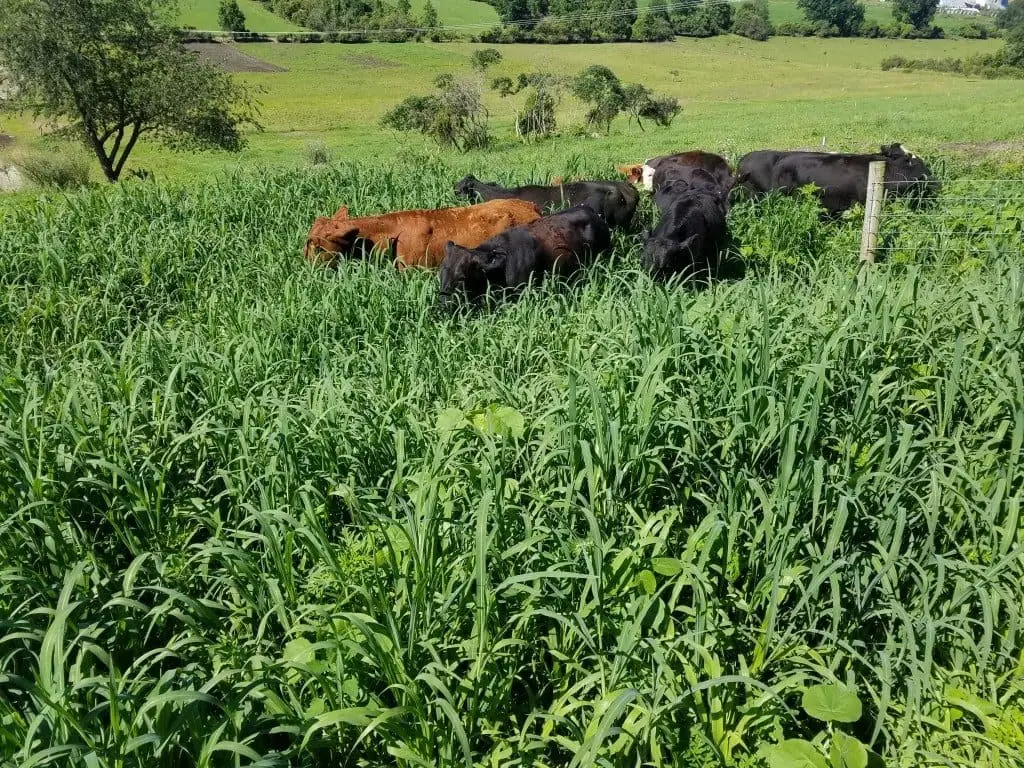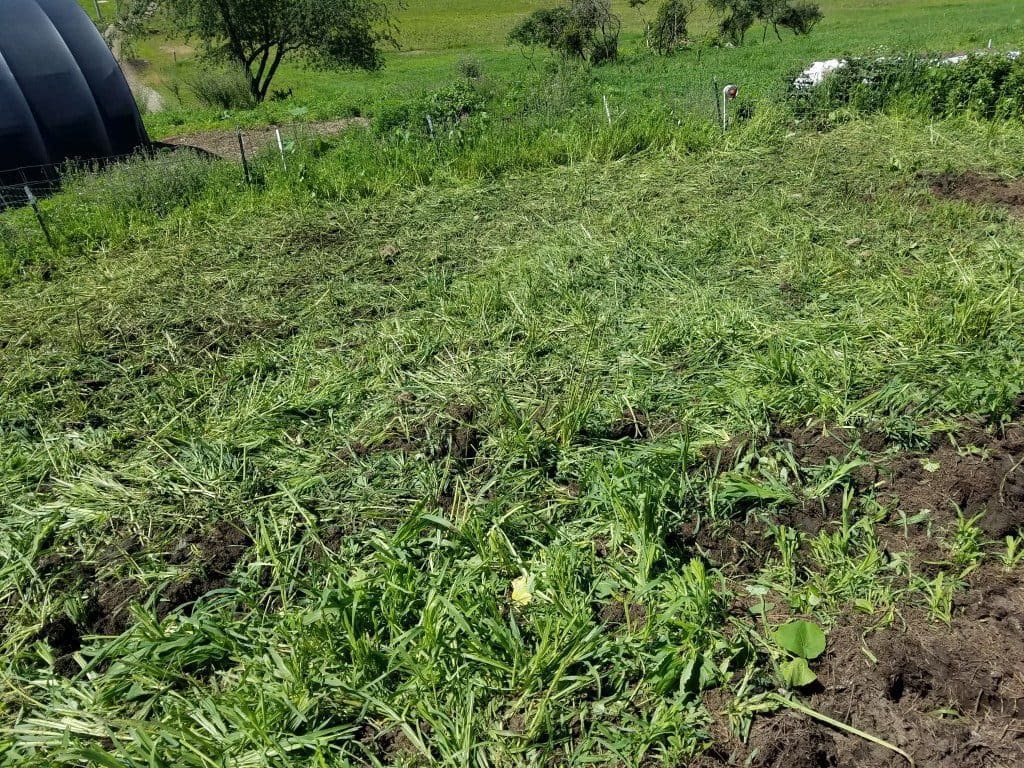Most years I allow the yard where the pigs spend the winter to grow up with whichever plants volunteers there. Usually that includes pumpkins, butternut squashes, and tomatoes, along with a mess of weeds. This year I hoped to plant an experimental crop of corn in there and let the pigs hog it down in the fall, but the wet spring didn’t allow that. As a backup plan I broadcasted pearl millet and rape left over from last year’s pasture trials.
Despite the lack of soil preparation, the swampy conditions, and the depredations of foraging chickens, the millet took off and grew rapidly. There were some areas where the thatch from feeding hay bales was too thick and a few mud puddles, but the rest of the yard quickly grew into a four-foot tall stand of high energy grass. The Dwarf Essex rape didn’t grow so well, but the millet more than made up for that deficiency.

Bringing fifty head of cattle into a 30×70 yard means that it only provided a half hour of grazing, so of course this isn’t a serious feeding strategy as much as a measure for erosion control and for keeping the soil cycling rather than just concentrating nutrients. I think better strategy would involve a high phosphorus demand grain crop to prevent long term phosphorus build-up in the soil, but I’ve never figured out how I would plant and manage a grain crop on this yard or if I could extract enough P to make a difference. So my pig pen offseason management has room for improvement, but I’m glad to see some progress.

